Showing 9–16 of 61 Products [Q A E ]
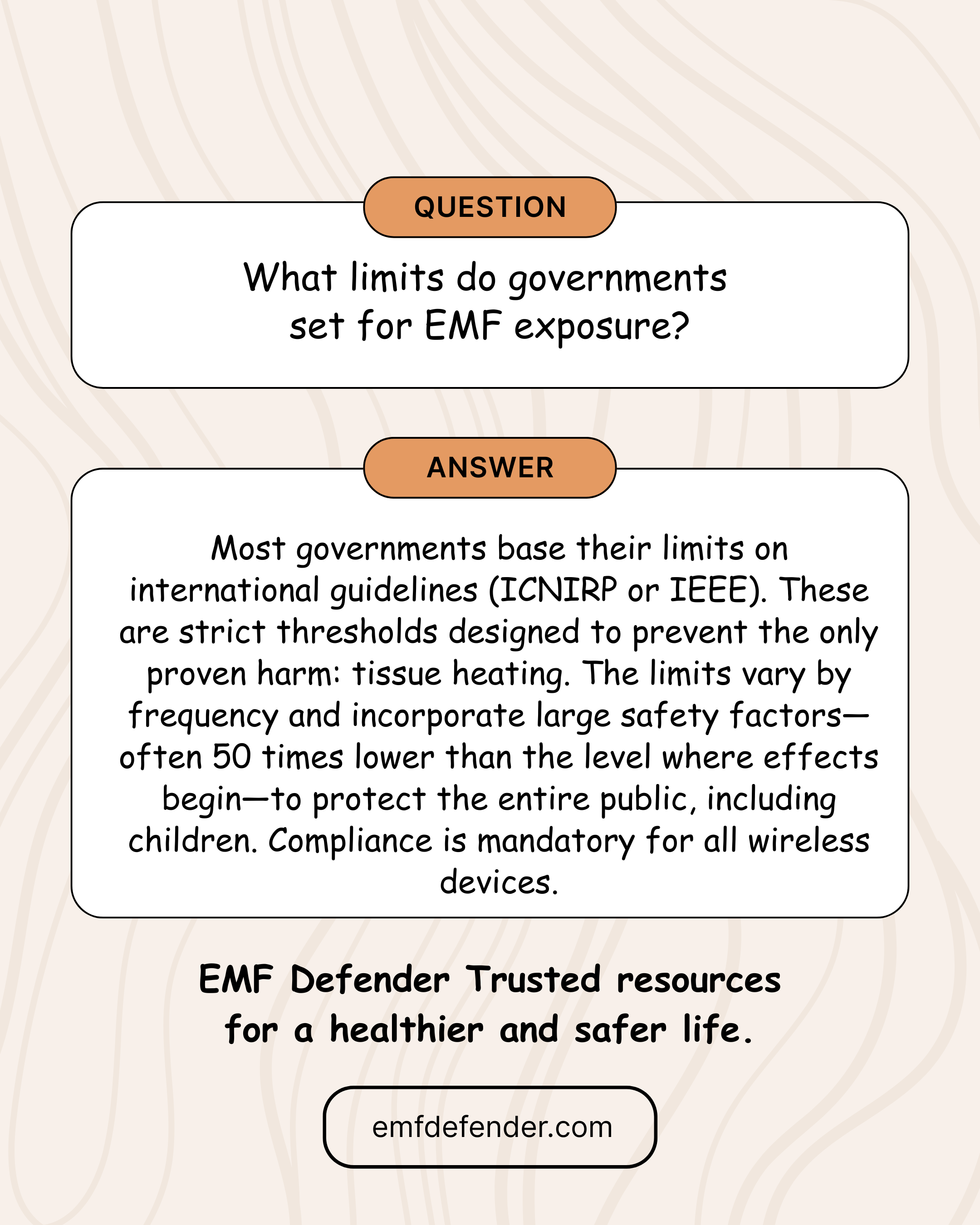
What limits do governments set for EMF exposure?
Most governments base their limits on international guidelines (ICNIRP or IEEE). These are strict thresholds designed to prevent the only proven harm: tissue heating. The limits vary by frequency and incorporate large safety factors—often 50 times lower than the level where effects begin—to protect the entire public, including children. Compliance is mandatory for all wireless devices.
Additional Information:
..
Additional Information:
..
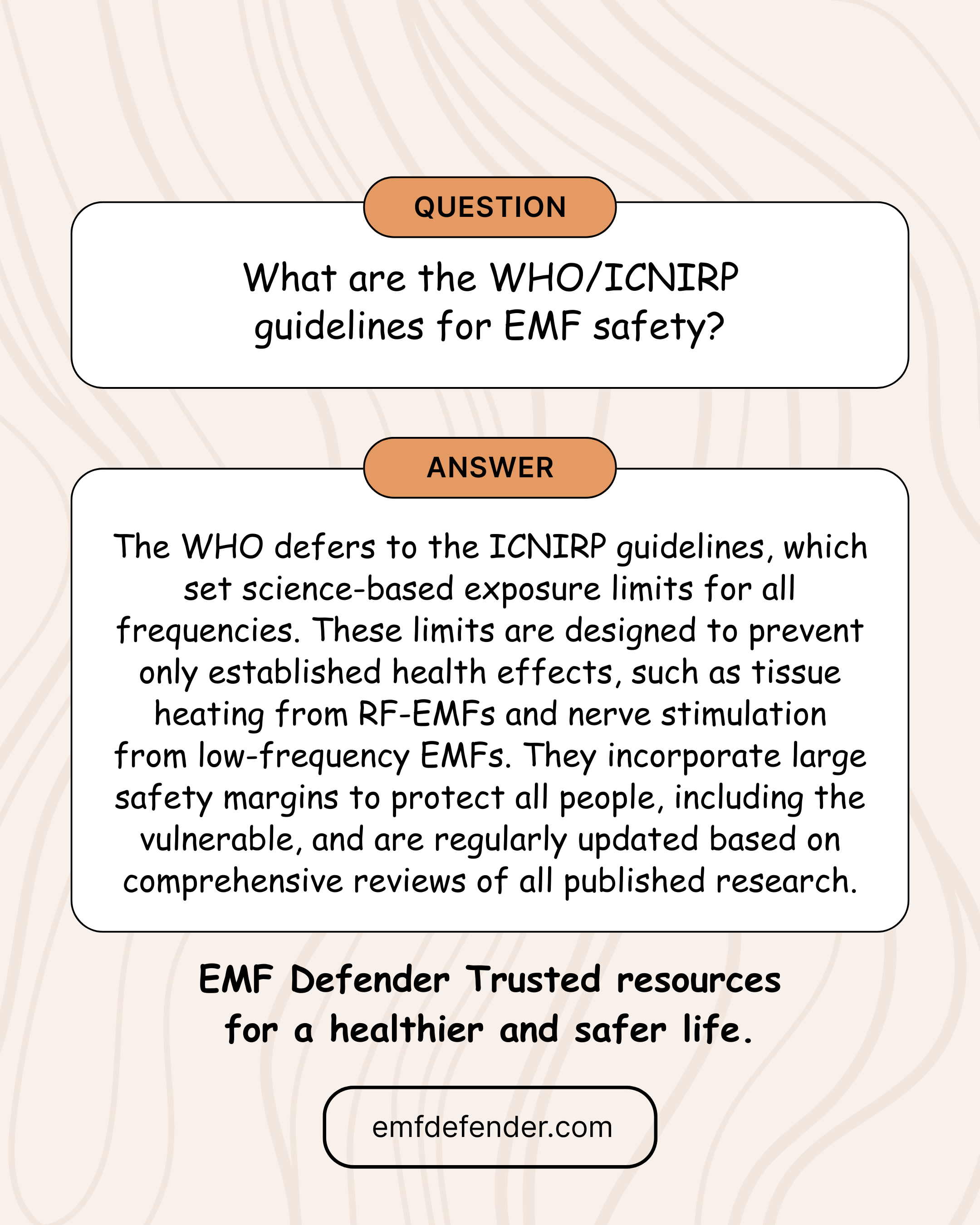
What are the WHO/ICNIRP guidelines for EMF safety?
The WHO defers to the ICNIRP guidelines, which set science-based exposure limits for all frequencies. These limits are designed to prevent only established health effects, such as tissue heating from RF-EMFs and nerve stimulation from low-frequency EMFs. They incorporate large safety margins to protect all people, including the vulnerable, and are regularly updated based on comprehensive reviews of all published research.
Additional Information:
..
Additional Information:
..
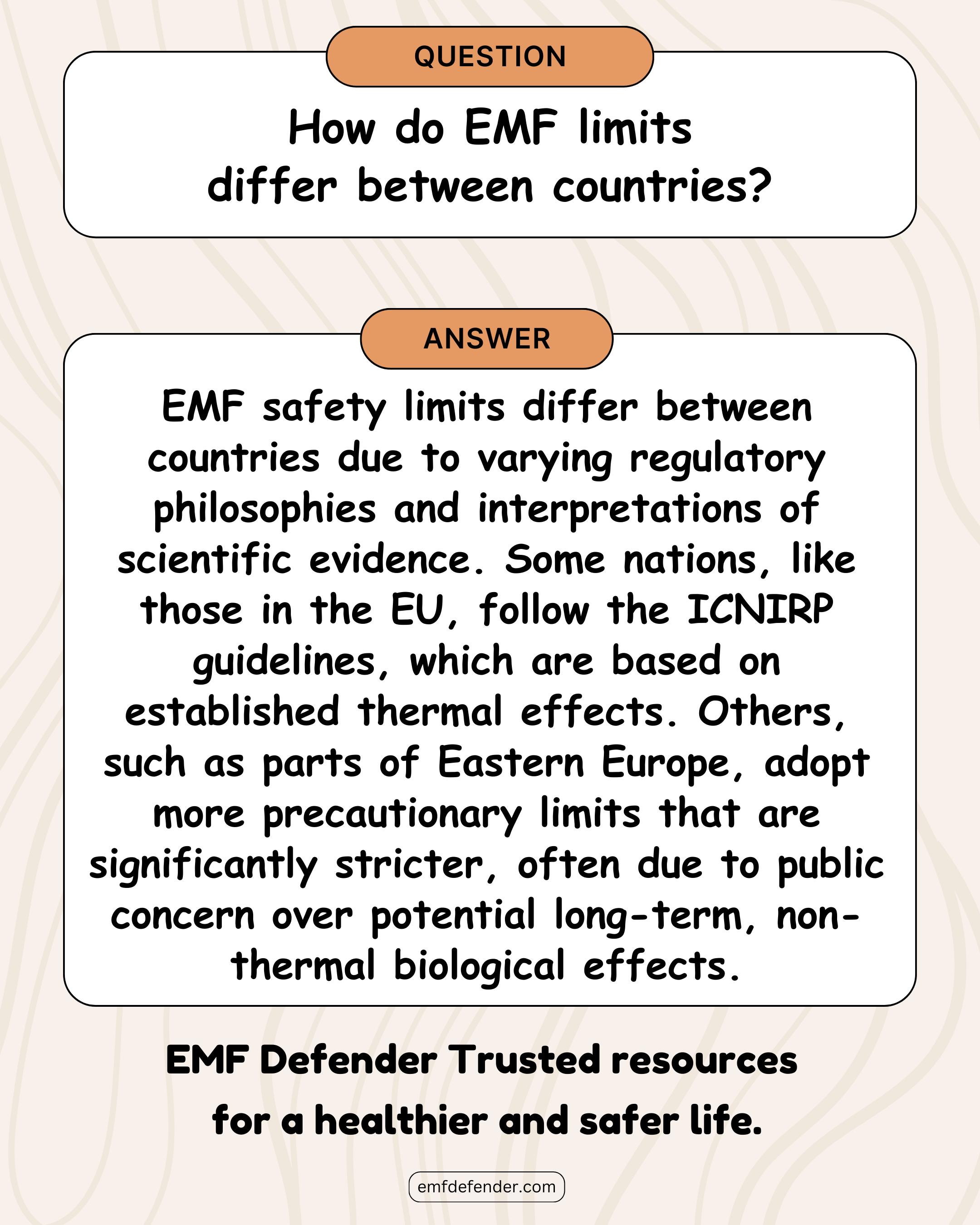
How do EMF limits differ between countries?
EMF safety limits differ between countries due to varying regulatory philosophies and interpretations of scientific evidence. Some nations, like those in the EU, follow the ICNIRP guidelines, which are based on established thermal effects. Others, such as parts of Eastern Europe, adopt more precautionary limits that are significantly stricter, often due to public concern over potential long-term, non-thermal biological effects.
Additional Information:
..
Additional Information:
..
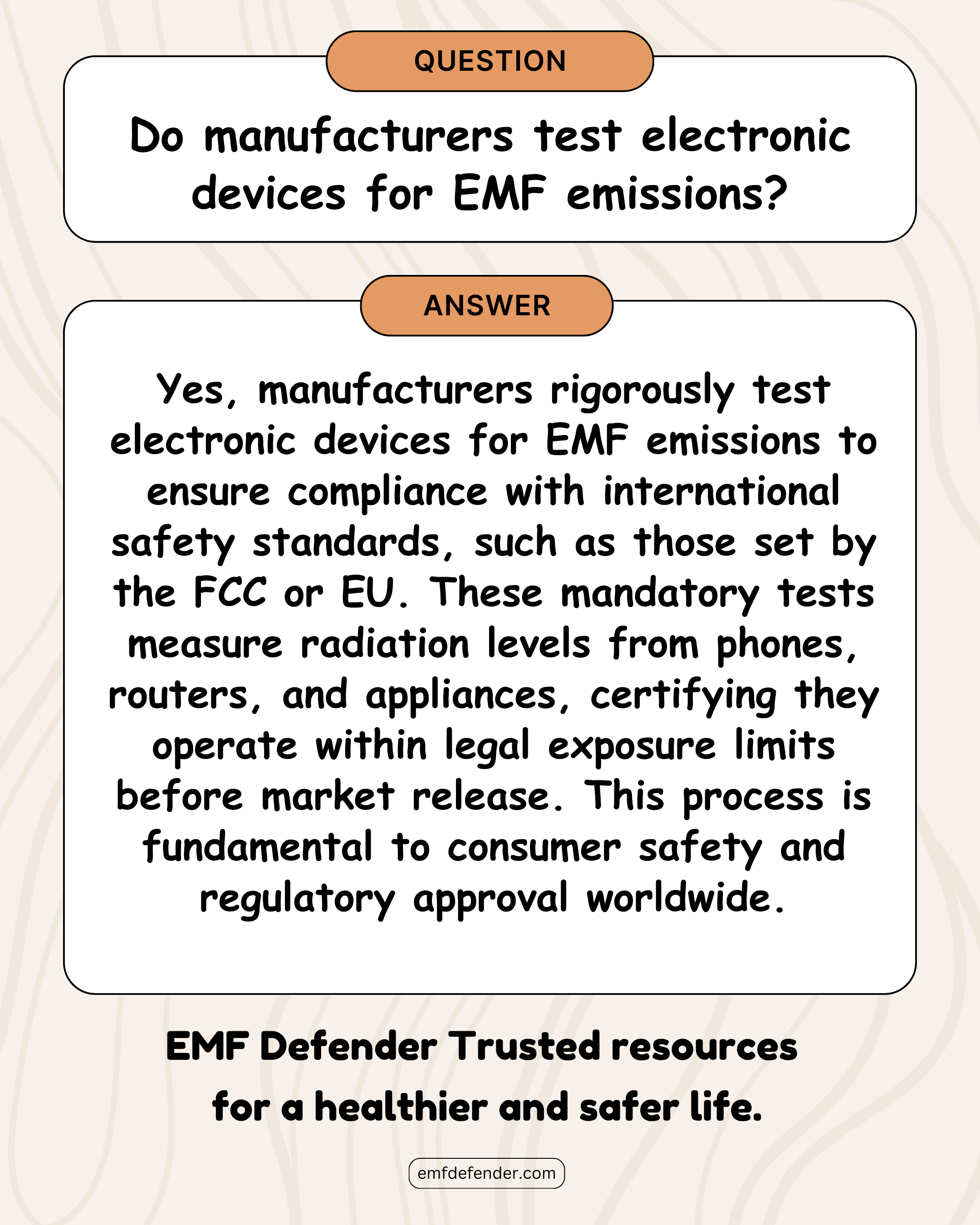
Do manufacturers test electronic devices for EMF emissions?
Yes, manufacturers rigorously test electronic devices for EMF emissions to ensure compliance with international safety standards, such as those set by the FCC or EU. These mandatory tests measure radiation levels from phones, routers, and appliances, certifying they operate within legal exposure limits before market release. This process is fundamental to consumer safety and regulatory approval worldwide.
Additional Information:
..
Additional Information:
..
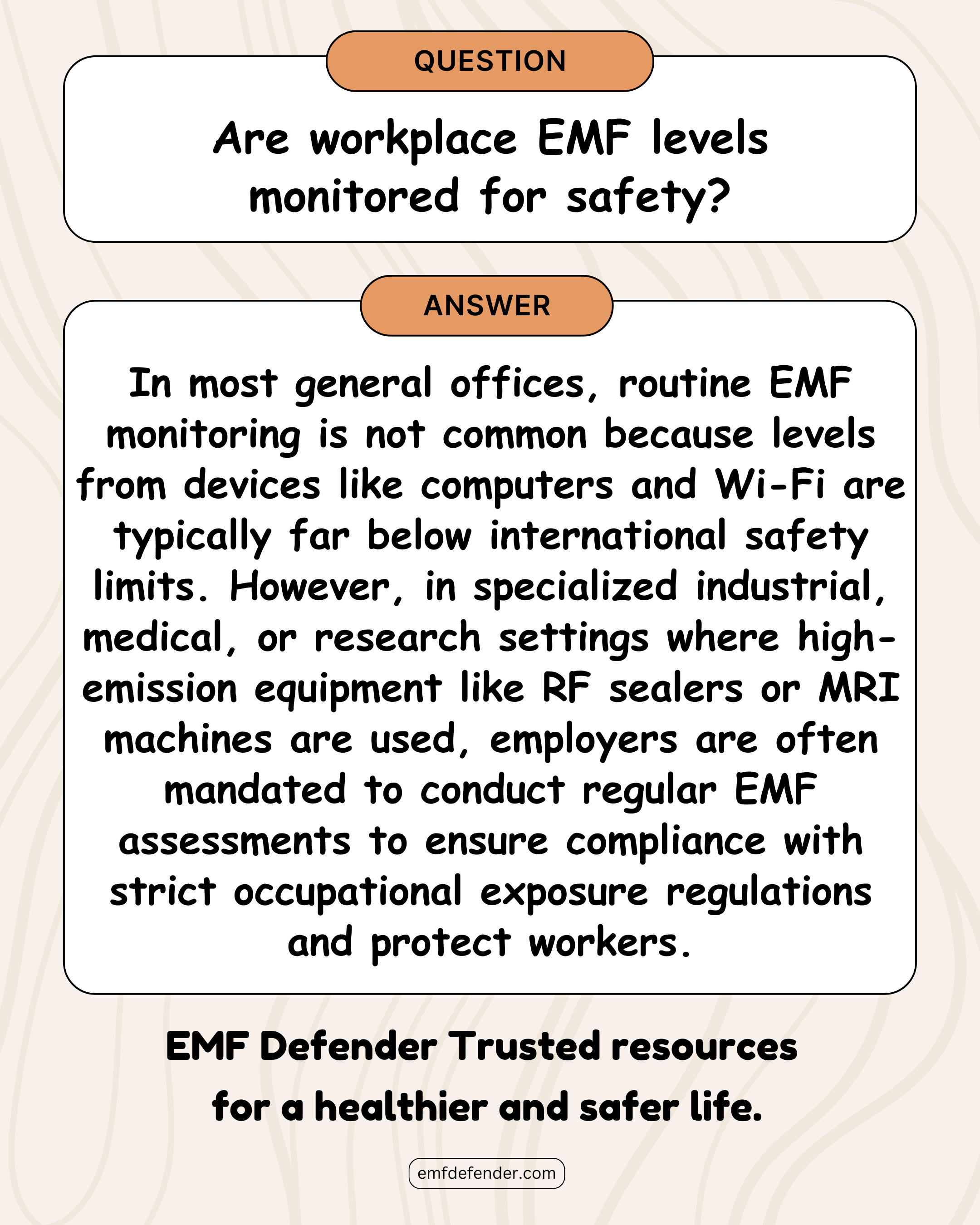
Are workplace EMF levels monitored for safety?
In most general offices, routine EMF monitoring is not common because levels from devices like computers and Wi-Fi are typically far below international safety limits. However, in specialized industrial, medical, or research settings where high-emission equipment like RF sealers or MRI machines are used, employers are often mandated to conduct regular EMF assessments to ensure compliance with strict occupational exposure regulations and protect workers.
Additional Information:
..
Additional Information:
..
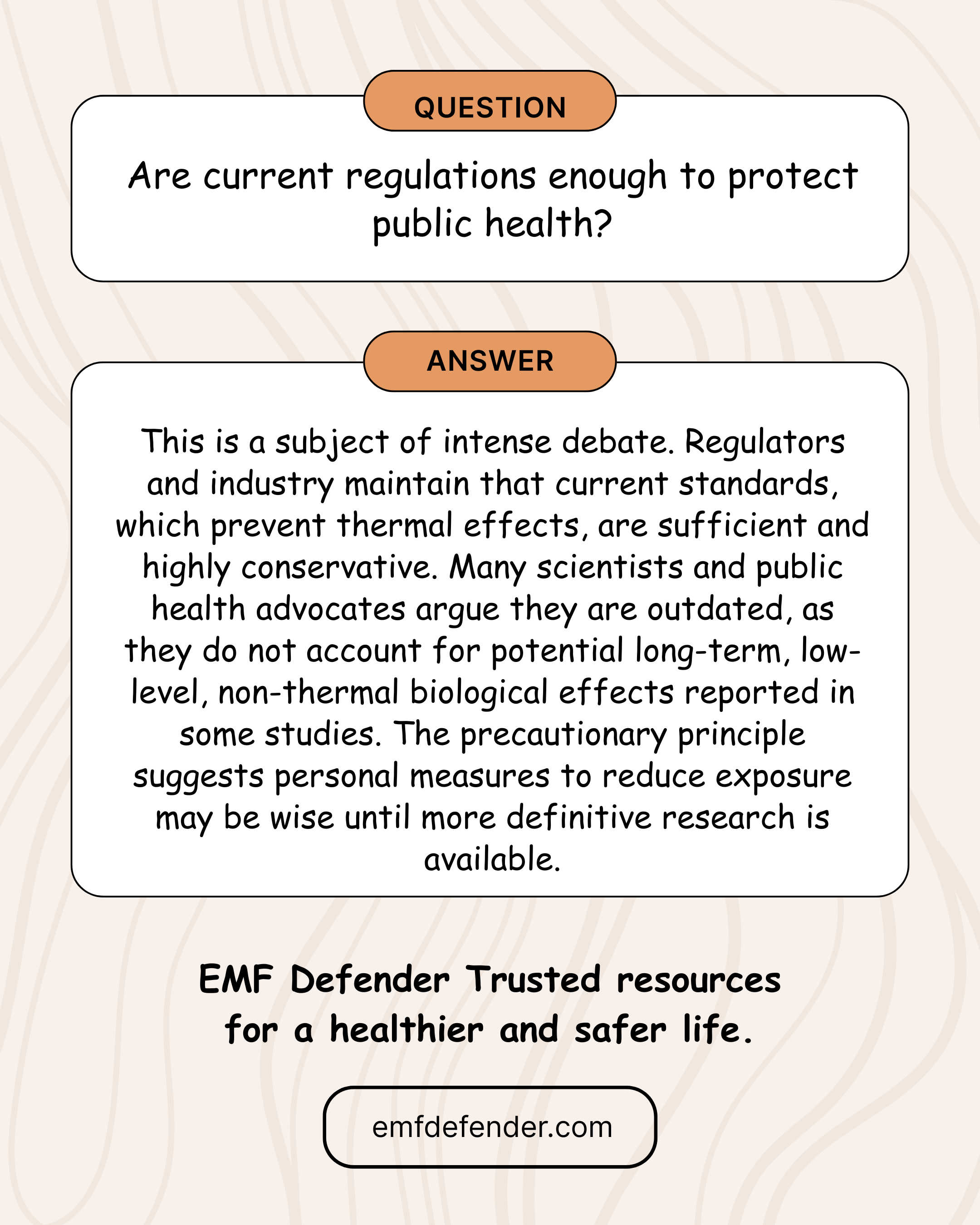
Are current regulations enough to protect public health?
This remains a subject of active debate. Regulators and industry experts argue that existing standards—which prevent thermal effects—are sufficient and conservative. However, many scientists and health advocates believe these guidelines are outdated, as they often fail to consider potential long-term, low-level, non-thermal biological effects noted in some studies. Until more definitive evidence is available, the precautionary principle suggests taking personal steps to reduce EMF exposure as a sensible safeguard for public health.
Additional Information:
..
Additional Information:
..
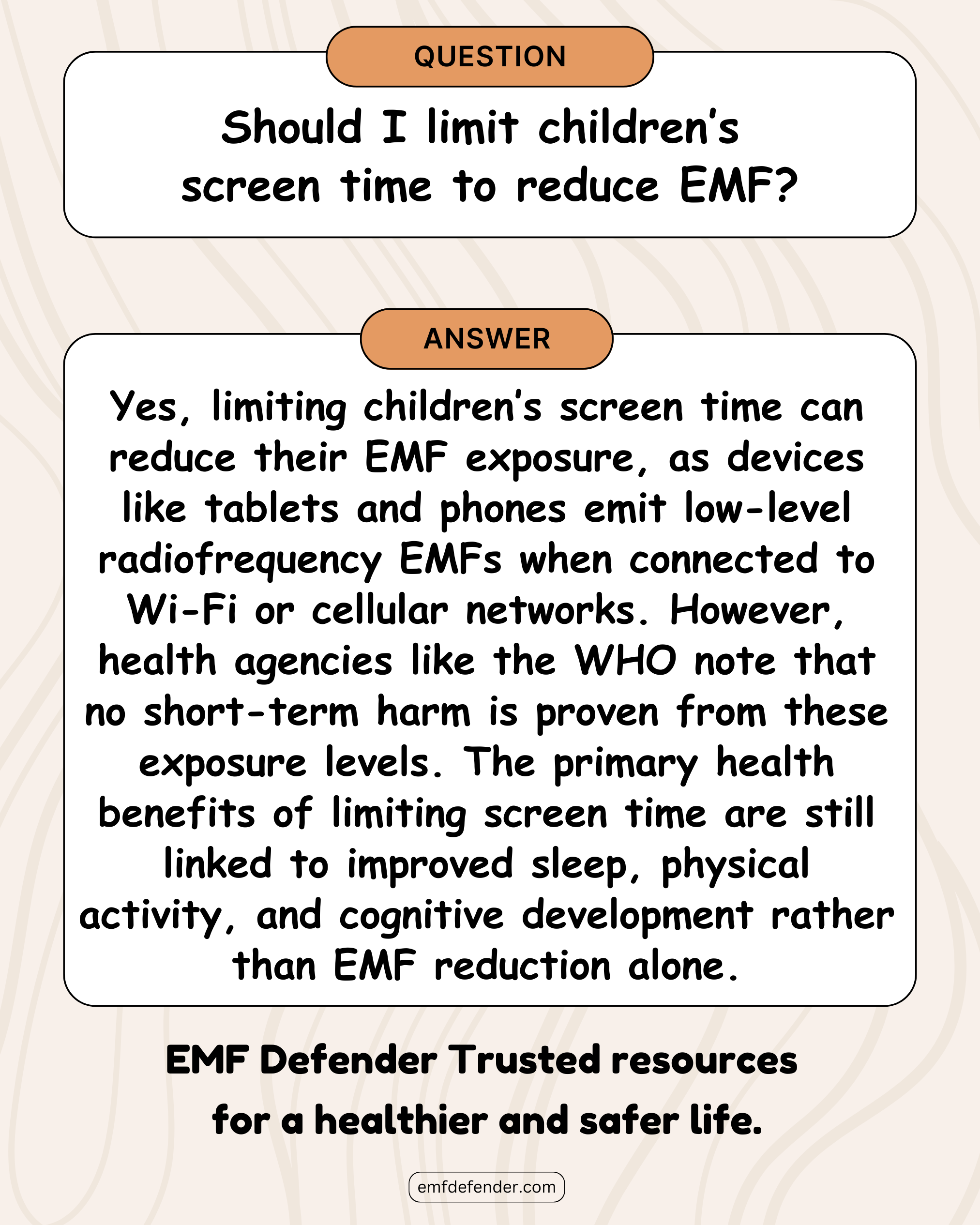
Should I limit children’s screen time to reduce EMF?
Yes, reducing children’s screen time can help lower their EMF exposure, since devices like phones and tablets emit radiofrequency (RF) EMFs when connected to Wi-Fi or mobile networks. While organizations like the WHO report no proven short-term harm at typical exposure levels, the main health benefits of limiting screen time are linked to better sleep, physical activity, and cognitive development. In this way, reducing screen time supports overall wellbeing beyond just lowering EMF exposure.
Additional Information:
..
Additional Information:
..
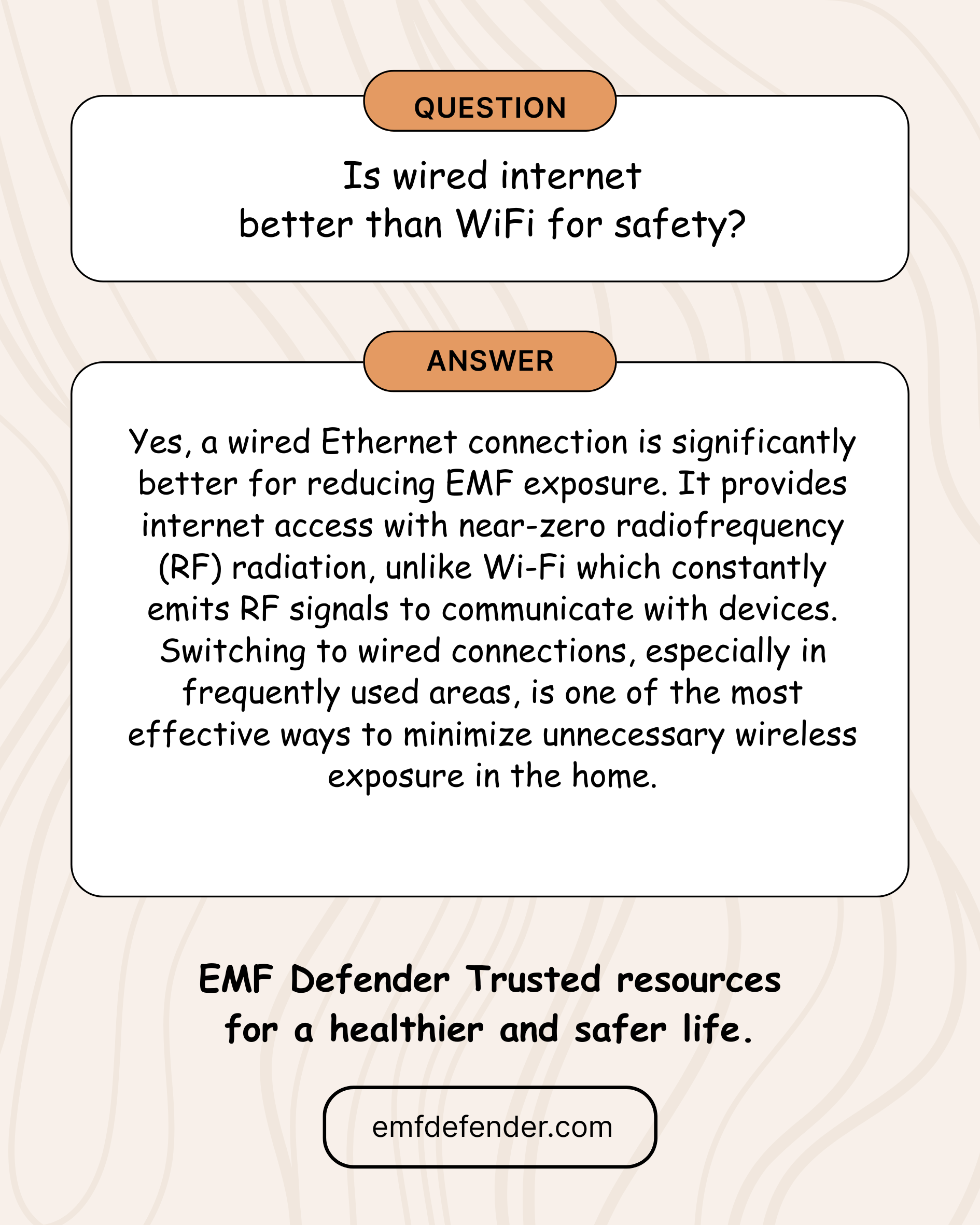
Is wired internet better than WiFi for safety?
Yes, using a wired Ethernet connection is far safer in terms of EMF exposure. Unlike Wi-Fi, which continuously emits radiofrequency (RF) radiation to stay connected with devices, wired internet provides stable access with near-zero RF emissions. Switching to wired connections, especially in high-use areas like bedrooms or offices, is one of the most effective ways to reduce unnecessary wireless exposure in the home. This simple adjustment not only improves safety but often enhances internet speed and reliability.
Additional Information:
..
Additional Information:
..